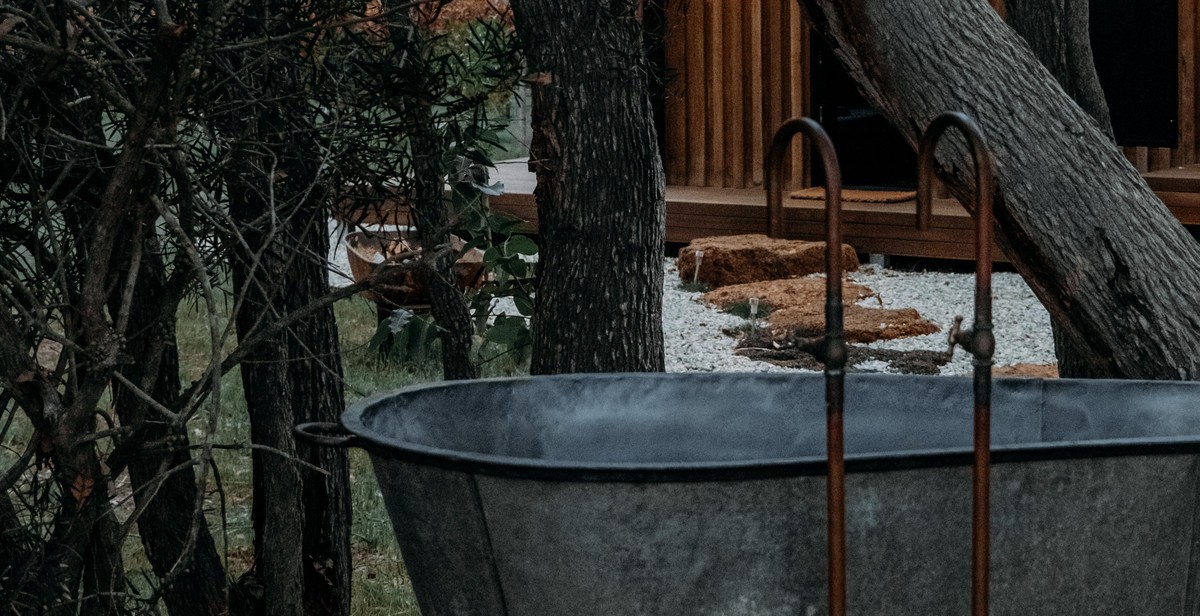How to Practice Forest Bathing: Immersing Yourself in Nature for Health and Well-being
Forest bathing is a practice that has been gaining popularity in recent years as people seek ways to connect with nature and improve their overall well-being. Also known as Shinrin-yoku, which translates to “taking in the forest atmosphere,” forest bathing originated in Japan in the 1980s and has since spread around the world.
The practice involves immersing yourself in a forest or natural environment and engaging your senses to fully experience the surroundings. It is not a strenuous hike or exercise but rather a slow, meditative walk that allows you to connect with nature on a deeper level.
Studies have shown that forest bathing can have numerous health benefits, including reducing stress, improving mood, boosting the immune system, and lowering blood pressure. It can also improve focus and creativity and increase feelings of happiness and well-being.
How to Practice Forest Bathing
To practice forest bathing, find a natural environment that appeals to you, whether it’s a forest, park, or beach. It’s important to choose a place where you feel comfortable and safe.
Once you’ve found your spot, take a slow, leisurely walk and engage your senses. Take in the sights, sounds, smells, and textures of the environment around you. You can also stop and sit or lie down to fully immerse yourself in the experience.
It’s important to disconnect from technology and distractions during your forest bathing session to fully engage with nature. Try to focus on the present moment and let go of any worries or stress.
Overall, forest bathing is a simple yet powerful way to improve your physical and mental well-being by connecting with nature. So, next time you’re feeling stressed or overwhelmed, take a break and immerse yourself in the healing power of nature.

What is Forest Bathing?
Forest bathing, also known as Shinrin-yoku, is a practice that originated in Japan in the 1980s. It involves immersing oneself in nature and taking in the atmosphere of the forest through all five senses. The practice is based on the idea that spending time in nature can have a positive impact on our physical and mental health.
The Origin of Forest Bathing
The term “Shinrin-yoku” was coined in Japan in the 1980s by the Forest Agency of Japan to promote the health benefits of spending time in nature. The practice was developed in response to the rapid urbanization of Japan and the associated increase in stress-related illnesses. Since then, forest bathing has become a popular form of therapy in Japan and has gained popularity around the world as a way to improve overall health and well-being.
The Benefits of Forest Bathing
Research has shown that forest bathing can have a range of health benefits, including:
- Reduced stress levels
- Improved mood
- Increased focus and creativity
- Lowered blood pressure
- Boosted immune system function
- Improved sleep quality
- Reduced inflammation
These benefits are thought to be due to a combination of factors, including the release of phytoncides (natural chemicals produced by plants), the calming effect of the natural environment, and the opportunity for physical activity and relaxation.
Overall, forest bathing is a simple yet powerful way to improve both physical and mental health. By immersing oneself in nature and taking in the sights, sounds, and smells of the forest, it is possible to reduce stress, improve mood, and boost overall well-being.

Preparing for a Forest Bathing Experience
Before embarking on a forest bathing experience, it is important to prepare properly to ensure a comfortable and enjoyable trip. Here are some tips to help you prepare for your next forest bathing experience:
Choosing the Right Forest
When selecting a forest for your forest bathing experience, consider the location and the type of forest. Choose a forest that is easily accessible and has a variety of trees and plants. Different forests have different effects on the body and mind. Some forests are better for relaxation, while others are better for invigorating the mind. Research the forest before you go and choose one that best suits your needs.
What to Wear
Wear comfortable clothing that is appropriate for the weather. If it’s cold, wear layers to keep warm. If it’s hot, wear lightweight and breathable clothing. Choose comfortable shoes that are suitable for walking on uneven terrain. Avoid wearing perfumes or scented lotions as they can interfere with the forest’s natural scents and distract from the experience.
What to Bring
- A backpack to carry your essentials
- A water bottle to stay hydrated
- A hat or sunscreen for protection from the sun
- A small first aid kit in case of emergencies
- A map or guidebook of the forest
- A camera or sketchbook to capture the beauty of the forest
Remember to leave the forest as you found it and take all your trash with you. Respect the natural environment and its inhabitants, and enjoy your forest bathing experience!

The Forest Bathing Experience
Forest bathing, or shinrin-yoku, is a practice that involves immersing oneself in nature and enjoying its therapeutic benefits. Here are the steps to follow for a successful forest bathing experience:
Finding Your Spot
The first step in forest bathing is finding a spot where you can connect with nature. Look for a quiet and peaceful area, away from the noise and distractions of everyday life. It could be a park, a forest, or a trail in the countryside.
Once you have found your spot, take a moment to appreciate your surroundings. Look at the trees, the plants, and the wildlife. Listen to the sounds of the forest and breathe in the fresh air.
Relaxing Your Mind and Body
After finding your spot, take a few deep breaths and let go of any stress or worries. Focus on the present moment and let yourself be fully immersed in nature.
You can sit or lie down on the ground, or lean against a tree. Close your eyes and let your mind wander. Allow yourself to be in a state of relaxation and calmness.
Engaging Your Senses
Engaging your senses is an important part of forest bathing. Take the time to notice the colors, textures, and scents of the natural environment around you. Touch the leaves, smell the flowers, and listen to the birds singing.
You can also try some gentle movements, such as stretching or yoga poses, to connect with your body and the natural environment.
- Take a slow walk and notice the details of the forest
- Pause and take a few deep breaths
- Listen to the sounds of nature
- Feel the texture of the leaves and bark
- Observe the colors and shapes of the plants and flowers
Engaging your senses will help you to fully immerse yourself in the forest and experience its healing benefits.

Tips for a Successful Forest Bathing Practice
Forest bathing is a simple yet effective way to improve your overall health and well-being. Here are some tips to help you make the most out of your forest bathing experience:
Make it a Habit
Like any other healthy habit, consistency is key to reaping the benefits of forest bathing. Make it a regular part of your routine. Set aside time each week to visit a nearby forest or park. Start with shorter sessions and gradually increase your time as you become more comfortable and familiar with the practice.
Unplug from Technology
One of the main goals of forest bathing is to disconnect from the distractions of modern life and reconnect with nature. Leave your phone and other electronic devices behind or turn them off during your forest bathing session. This will allow you to fully immerse yourself in the natural environment and be present in the moment.
Be Present in the Moment
Forest bathing is all about being present in the moment and fully experiencing the sights, sounds, and smells of nature. Take your time and move through the forest slowly, using all of your senses to absorb your surroundings. Pay attention to the details and allow yourself to fully appreciate the beauty and tranquility of the natural world.
By following these simple tips, you can develop a successful forest bathing practice that will enhance your physical and mental well-being.

Conclusion
Forest bathing is a simple yet effective way to improve your health and well-being. By immersing yourself in nature and disconnecting from technology, you can reduce stress, improve your mood, boost your immune system, and increase your energy levels.
To practice forest bathing, find a quiet and peaceful forest or park near you. Make sure to dress comfortably and bring along some water and snacks. Start by taking slow and deep breaths, and then focus on your senses as you explore the natural surroundings. Take in the sights, sounds, smells, and textures of the forest, and try to be present in the moment.
Remember that forest bathing is not a race or a competition. It’s about slowing down, relaxing, and enjoying the beauty of nature. You don’t need to hike or exercise vigorously to benefit from forest bathing. Simply being in nature and taking in the natural surroundings can have a profound impact on your mental and physical health.
If you’re feeling stressed, anxious, or overwhelmed, consider incorporating forest bathing into your self-care routine. Even just a few minutes of quiet time in nature can make a big difference in how you feel.
References:
- Li, Q., et al. (2007). Forest bathing enhances human natural killer activity and expression of anti-cancer proteins.
- Mao, G., et al. (2012). Effects of short-term forest bathing on human health in a broad-leaved evergreen forest in Zhejiang Province, China.
- Oh, B., et al. (2015). The effects of forest therapy on coping with chronic widespread pain: physiological and psychological differences between participants in a forest therapy program and a control group.
